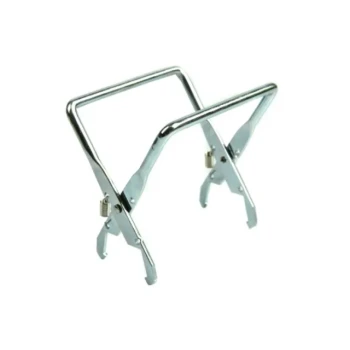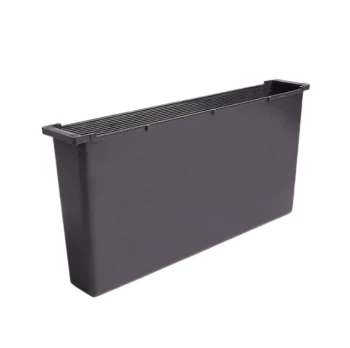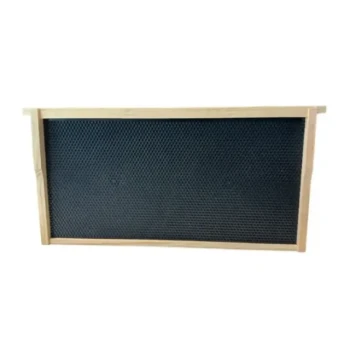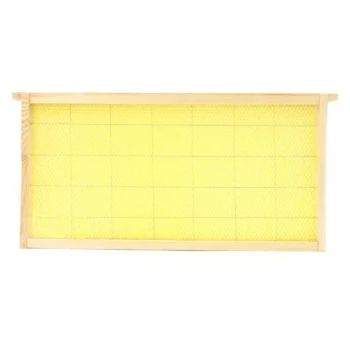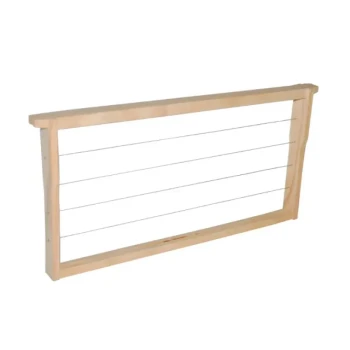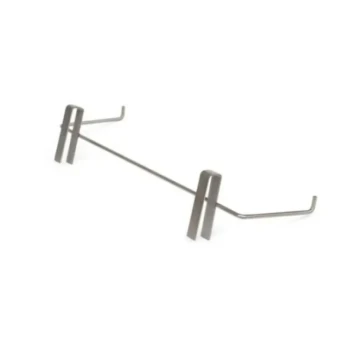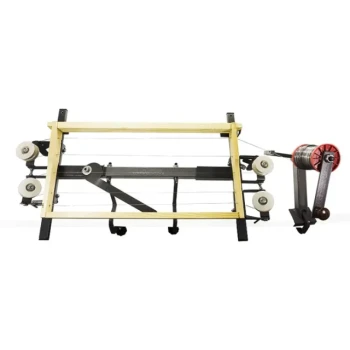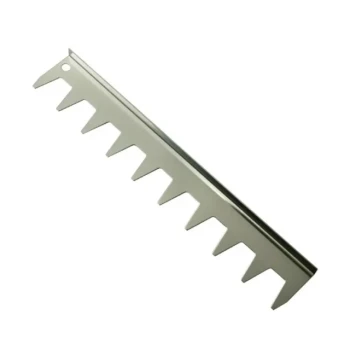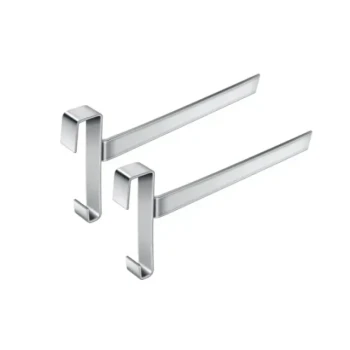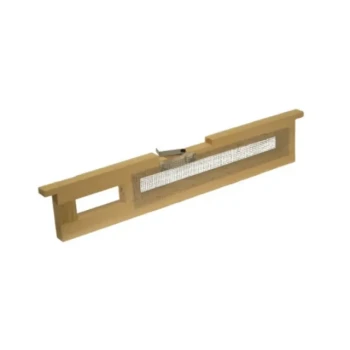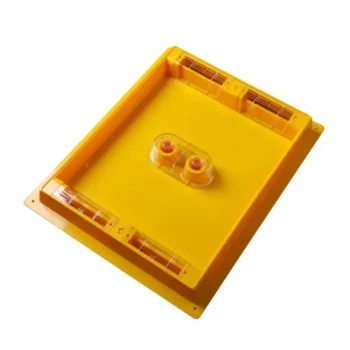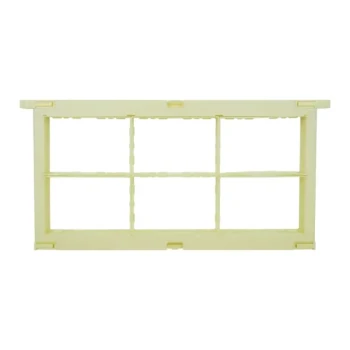A healthy bee frame is a picture of organized productivity, showing a dense, consistent pattern of developing bees in all stages. You should see a large, solid area of capped brood (sealed cells) in the center, surrounded by a ring of progressively younger larvae, and then newly laid eggs on the outer edges of this brood nest. This compact arrangement is the most important indicator of a vigorous and well-functioning colony.
A healthy frame is defined not just by the presence of brood, but by its pattern. A solid, contiguous area of brood indicates a prolific queen and a healthy workforce, while a scattered, spotty pattern is a primary warning sign that requires immediate investigation.
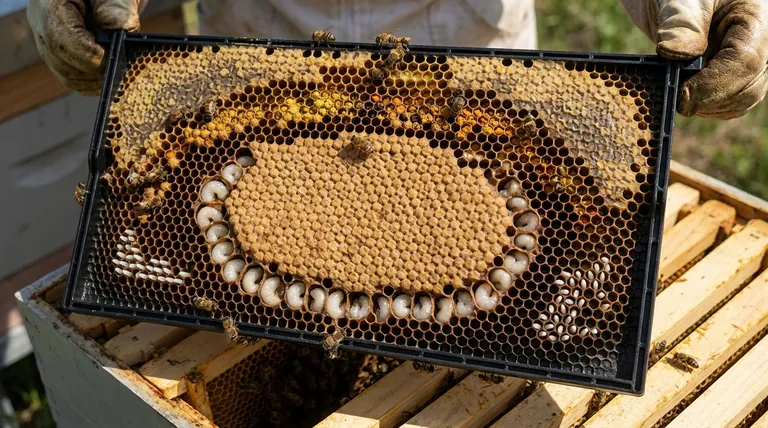
Deconstructing a Healthy Brood Frame
A brood frame tells the story of your colony's recent past and its immediate future. Understanding its components allows you to assess the health of your queen and the strength of your hive.
The Brood Pattern: A Sign of Queen Quality
The most crucial element is the brood pattern. A strong queen lays eggs systematically, starting from the center of the frame and working her way outwards in a spiral or circular pattern.
This behavior results in a beautiful, organized structure. The oldest brood (pupae) will be capped in the center, with a ring of younger, open larvae surrounding them, and the newest eggs on the periphery. This solid "bullseye" pattern is the hallmark of a healthy queen.
Identifying the Three Stages of Brood
To confirm a healthy cycle, you must be able to identify all three stages of development.
- Eggs: Look closely at the very bottom of the wax cells. A healthy egg is tiny, white, and shaped like a grain of rice, standing upright. A queen lays one egg per cell.
- Larvae: After three days, eggs hatch into larvae. These are small, C-shaped white grubs floating in a pool of royal jelly. They should appear plump, pearly white, and glistening. As they grow, they fill more of the cell.
- Pupae (Capped Brood): Once larvae are fully grown, workers seal their cells with a wax capping. This capped brood has a dry, slightly convex (domed) appearance, typically light to medium brown in color.
Beyond the Brood: A Complete Picture
A healthy frame contains more than just developing bees. The colony strategically organizes its resources around the brood nest to ensure efficiency and survival.
The Arc of Resources
You will almost always find an arc of resources stored above and to the sides of the brood nest. Immediately surrounding the brood is a band of multi-colored pollen (often called "bee bread"), which is the protein source for feeding larvae.
Above and around the pollen, you will find cells filled with nectar or capped honey, the colony's carbohydrate energy source. This layout keeps essential food close to the hungry, developing bees.
The Role of Empty Cells
It is perfectly normal to see a few empty, polished cells scattered within the brood pattern. These are not a sign of a problem.
These cells are either recently vacated by newly hatched bees, are being cleaned and prepared for the queen to lay in, or may be occupied by "heater bees" who use their bodies to regulate the temperature of the brood nest.
Warning Signs on a Brood Frame
Just as a good pattern signals health, a poor pattern is a clear warning sign. This is where a beekeeper's careful observation is most critical.
A Spotty or "Shotgun" Brood Pattern
A "shotgun" pattern is the opposite of a solid one. It is characterized by scattered capped brood with many empty cells or cells with different aged larvae in between.
This is a major red flag and can indicate several problems: an old or failing queen, an inbred queen whose eggs are not viable, or a serious brood disease that is causing workers to remove sick larvae.
Discolored or Sunken Cappings
Cappings over healthy pupae should be uniform and slightly raised. If you see cappings that are sunken, greasy-looking, perforated, or much darker than surrounding cells, you must investigate for disease. This is a classic symptom of American Foulbrood (AFB).
Unhealthy Larvae
Healthy larvae are always pearly white. If you see larvae that are yellow, brown, twisted, or have melted into a formless goo at the bottom of the cell, the colony is fighting a disease like European Foulbrood (EFB) or Sacbrood.
Reading the Frame: A Quick Guide
During an inspection, use this quick guide to interpret what you see.
- If your frame has a solid, compact brood pattern: This indicates you have a healthy, productive queen and a strong colony. No immediate action is needed.
- If your frame has a "shotgun" or spotty pattern: Your queen may be failing or there could be a brood disease. Monitor the colony closely and inspect for other signs of illness.
- If your frame shows discolored larvae or sunken/perforated cappings: You must immediately investigate for serious brood diseases. Isolate the hive and seek advice from an experienced local beekeeper or apiary inspector.
By learning to read the story on each frame, you transform from a bee-keeper into a true colony manager.
Summary Table:
| Feature | Healthy Sign | Warning Sign |
|---|---|---|
| Brood Pattern | Solid, compact 'bullseye' | Spotty, scattered 'shotgun' pattern |
| Capped Brood | Light brown, slightly domed cappings | Sunken, dark, or perforated cappings |
| Larvae | Pearly white, plump, C-shaped | Discolored (yellow/brown), melted, or twisted |
| Eggs | White, rice-shaped, upright in cell | Absent or irregularly placed |
| Resource Layout | Pollen & honey arcs around brood nest | Disorganized or insufficient food stores |
Equip your apiary for success with HONESTBEE.
Managing a healthy, productive colony starts with the right equipment. As a trusted wholesale supplier for commercial apiaries and beekeeping equipment distributors, HONESTBEE provides the durable, reliable supplies you need to support strong brood development and hive vitality.
Let us help you build a stronger operation. Contact our team today to discuss your wholesale needs and discover how our products contribute to the thriving colonies you manage.
Visual Guide
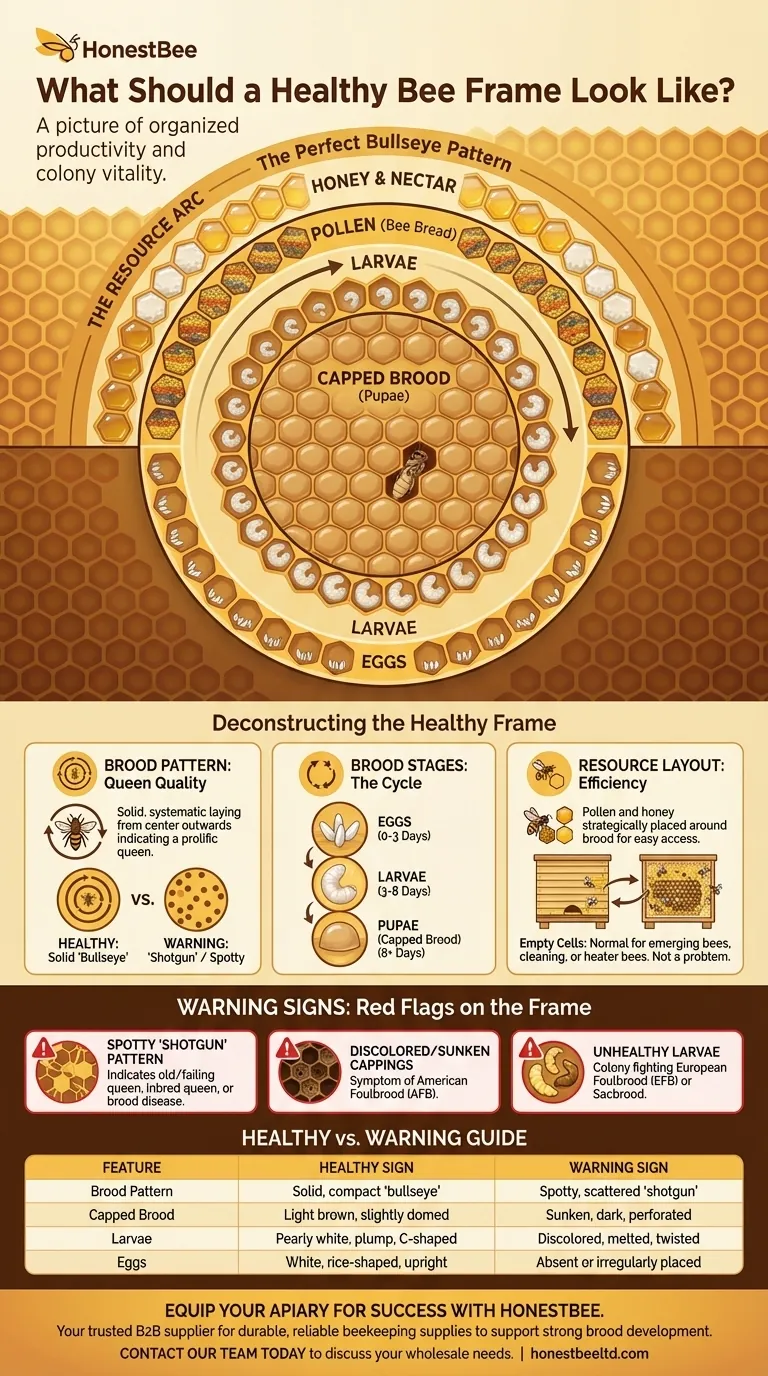
Related Products
- Plastic Bee Frame Beekeeping Hive Frames for Wholesale
- Durable Galvanized Steel Frame Grip
- Professional In-Hive Bee Feeder HONESTBEE Frame for Beekeeping
- Assembled Wooden Bee Frames with Plastic Foundation for Durability and Convenience by HONESTBEE
- 7 x Auto Bee Flow Hive Frames Plastic Beekeeping Hive Box Supplies
People Also Ask
- Can beekeepers switch between wooden and plastic frames? Optimize Your Hive's Performance
- Are plastic frames good? Boost Apiary Efficiency with Durable, Pest-Resistant Frames
- What are the differences between wooden and plastic frames in beehives? Choose the Best for Your Apiary
- What are the advantages of plastic frames for beehives? Boost Apiary Efficiency & Durability
- What is a general rule for beekeepers with many hives regarding frame choice? Maximize Efficiency with Plastic Frames

